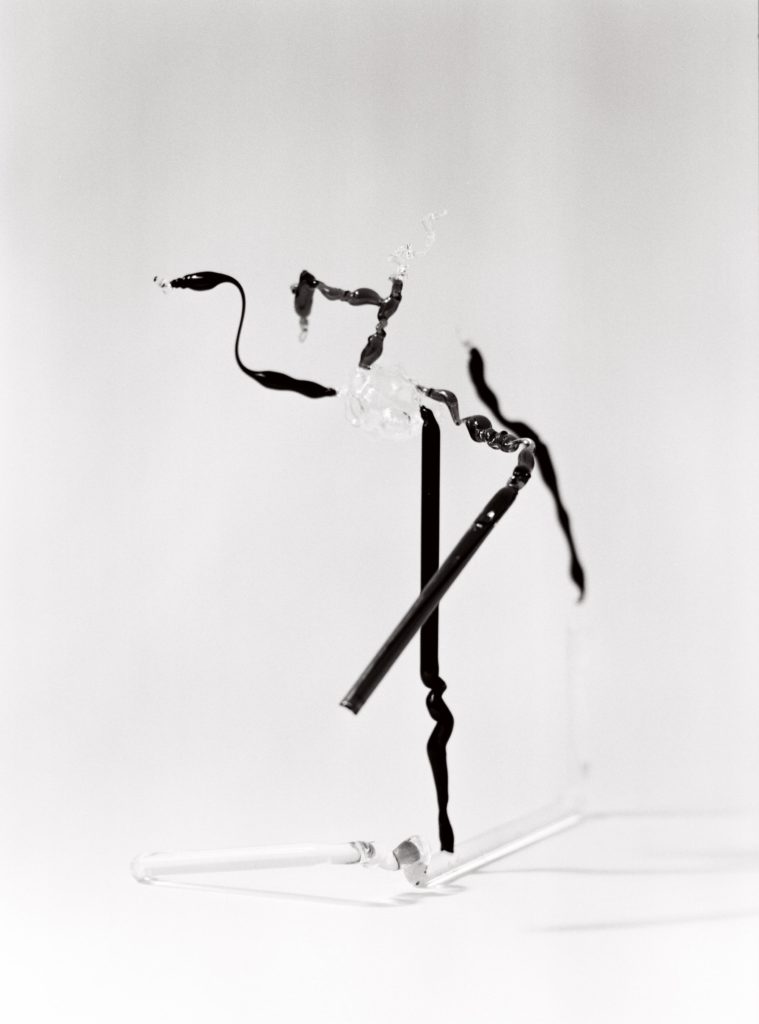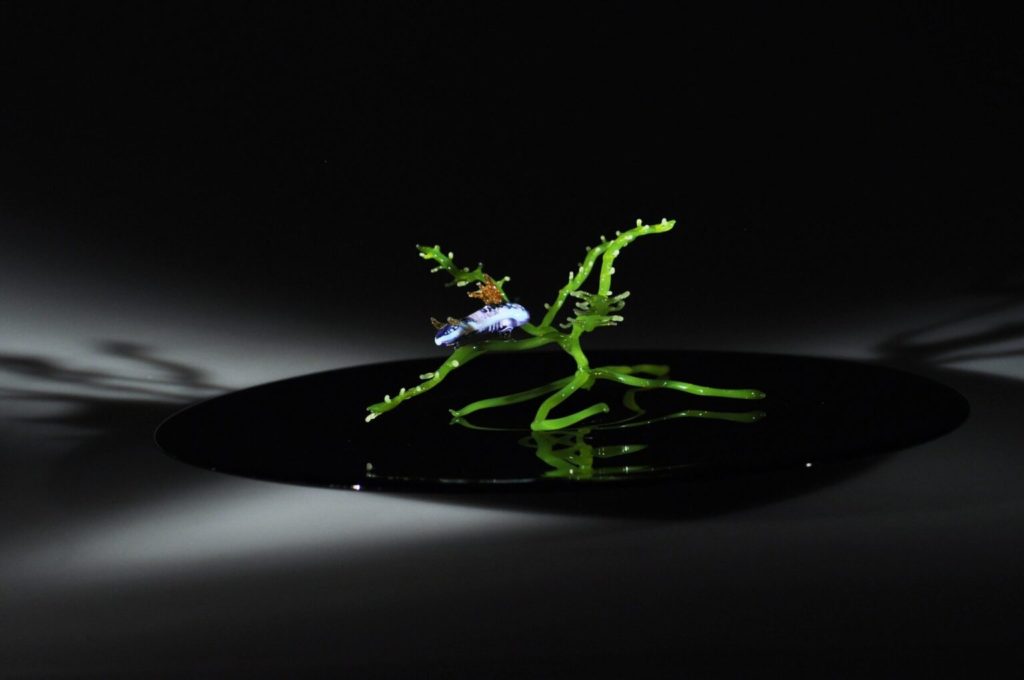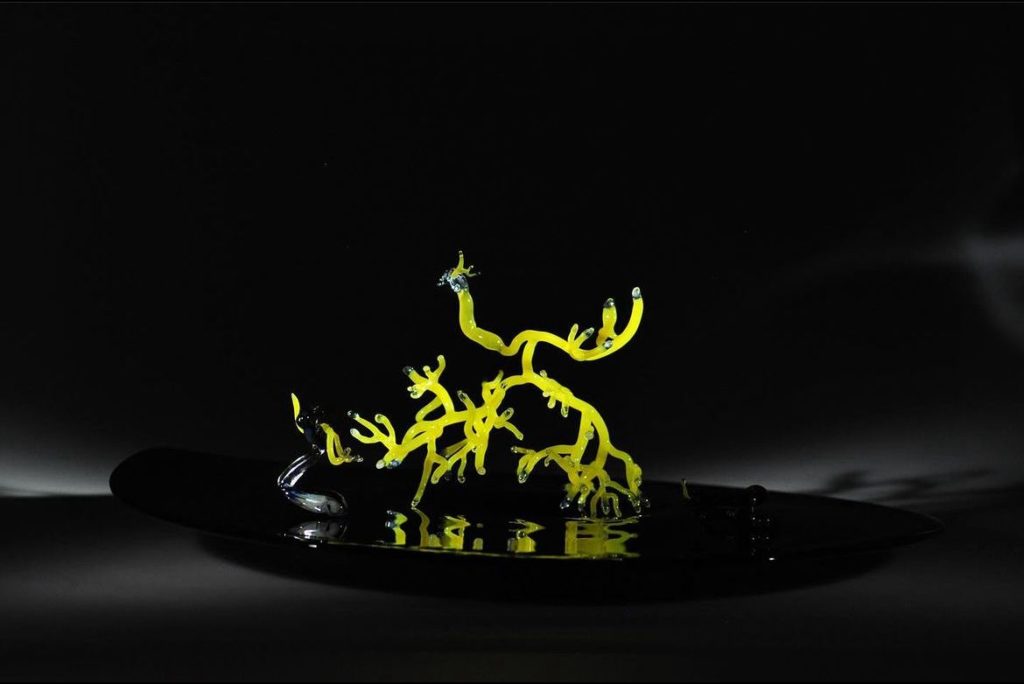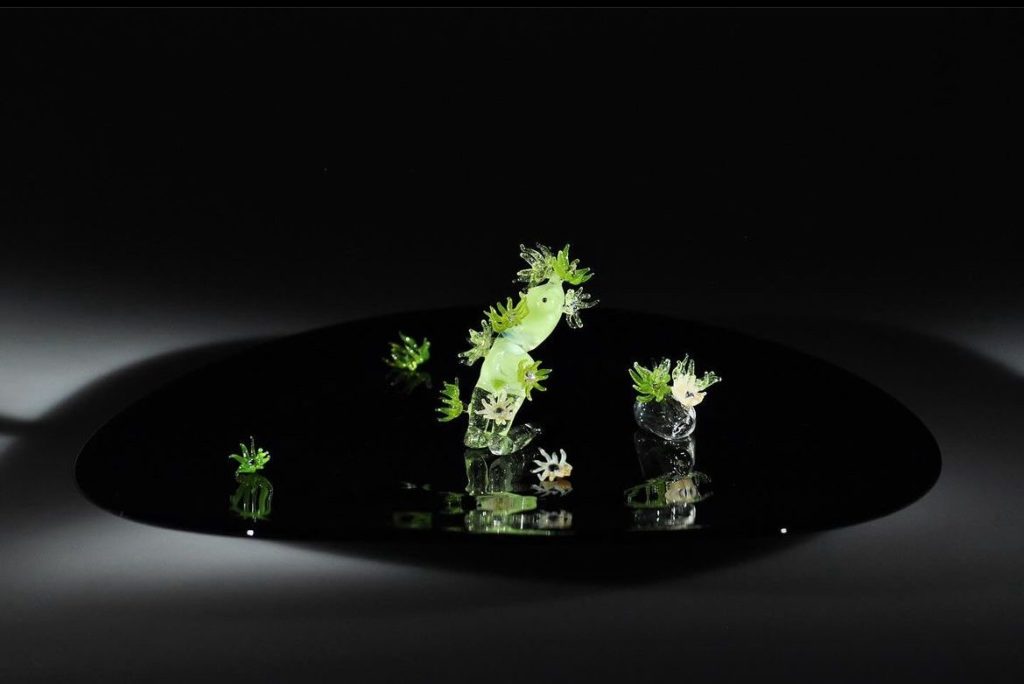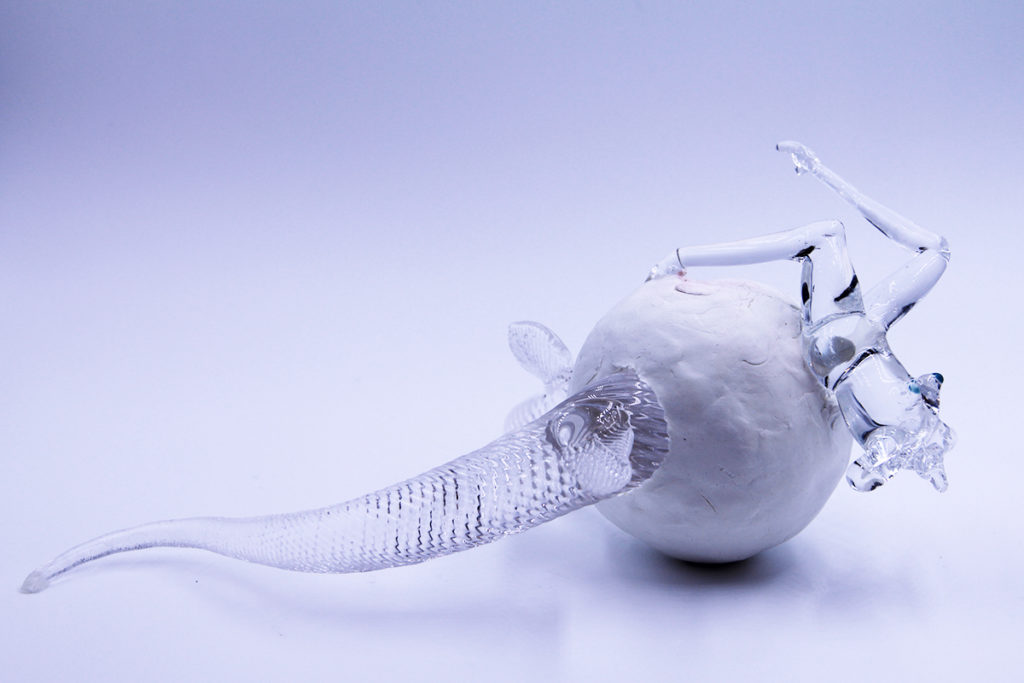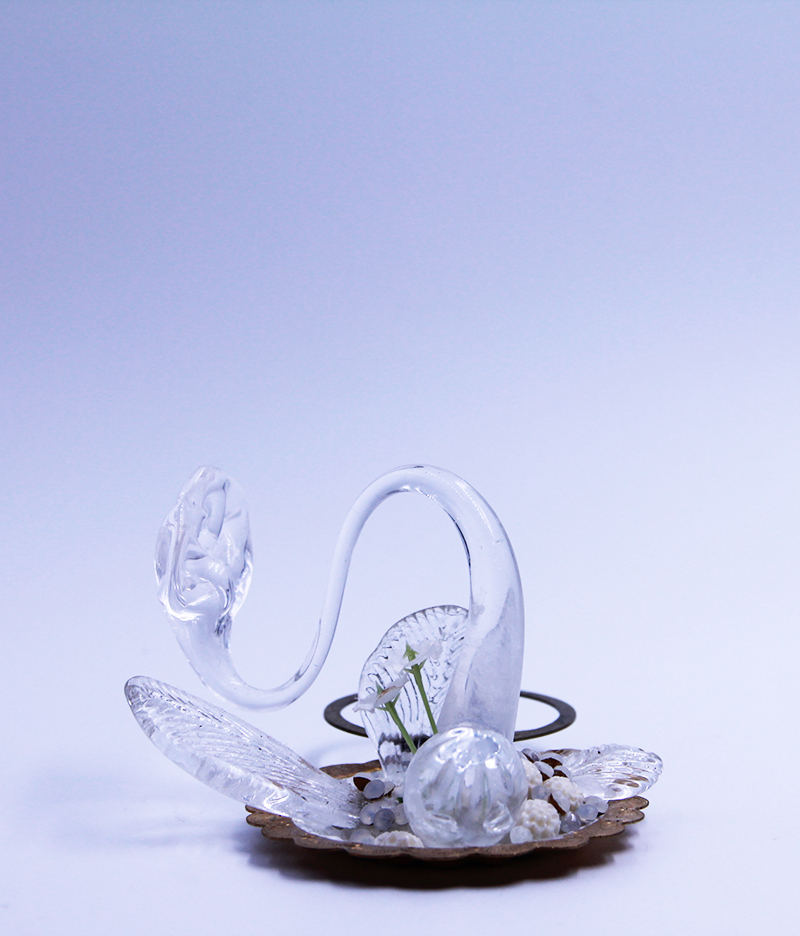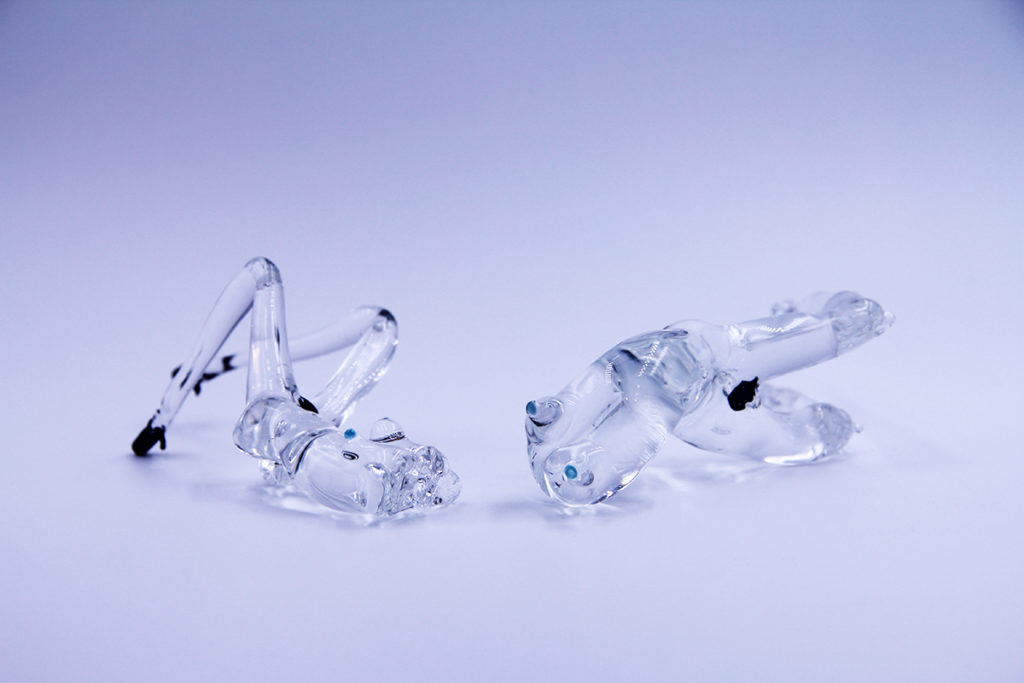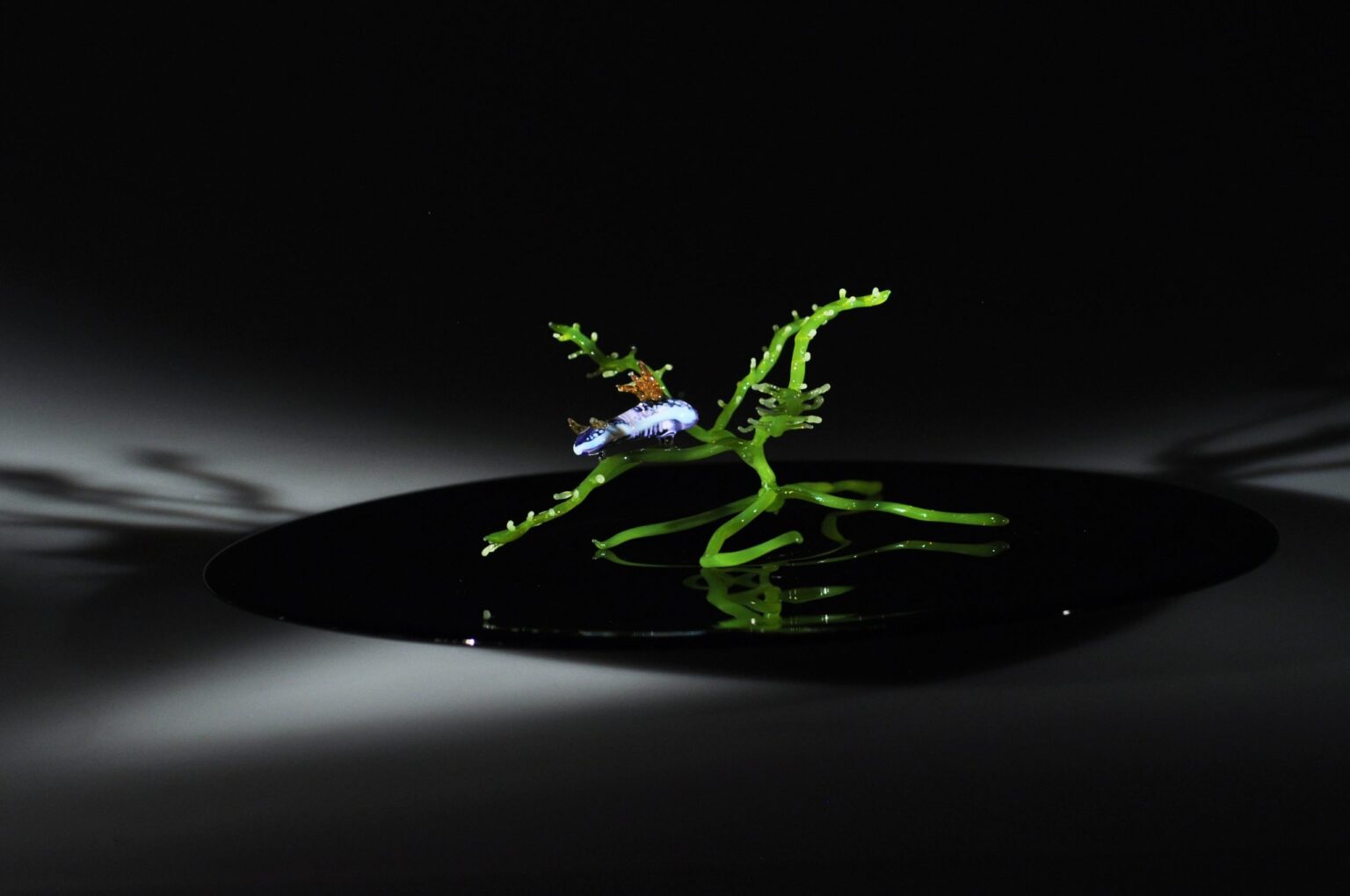
Situated 2,481 km from Kuala Lumpur, lies Marikina, the Shoe Capital of the Philippines in Manila. The city dances along the enchanting curves of the Marikina River which used to be one of the important routes during the Spanish colonial era.
Behind the concrete, steel and bustling markets burst with fiery chilies and jade greens – hides pockets of courtyards where frangipani trees whisper secrets to moss-covered walls, and the air hangs heavy with the scent of jasmine.
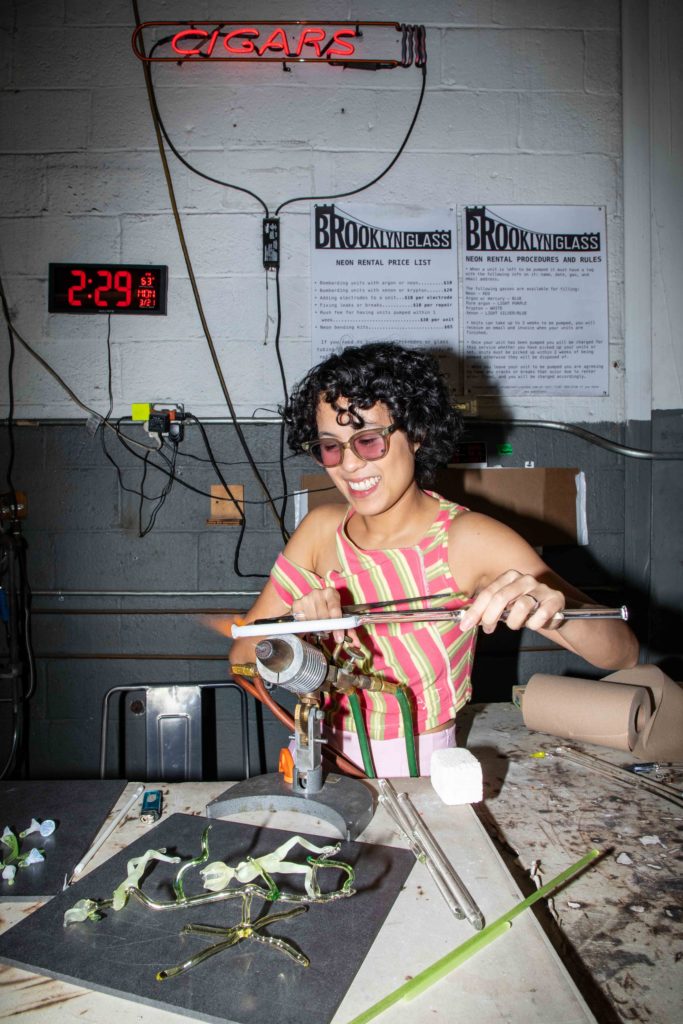
This is where Christina “Goldie” Poblador grew up. Goldie is a Filipina glass artist currently based in New York who uses glass blowing to create sculptures that come together to form larger interactive and multi-sensory installations that incorporate video, scent, and performance.
Represented by Mono8 Gallery, Goldie Poblador is one of the 50 artists currently exhibiting at the leading showcase and art market hub dedicated to Southeast Asian contemporary art, S.E.A Focus 2024.
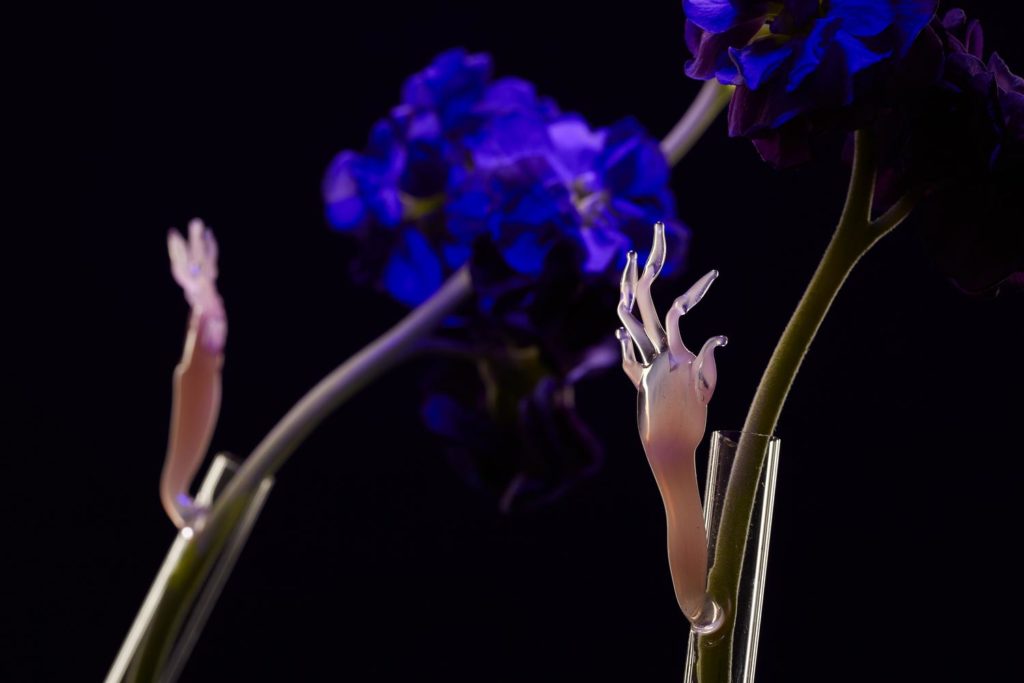
Is there a childhood experience that significantly shaped your philosophy of life?
Living in close proximity to a lot of tropical plants and fauna I feel shaped the way I see the world. To watch the world around me, and the ecology of the area I grew up in change through the years has impacted how I view the world as a human and in my work.
I felt like an outcast as a child, so I spent most of my time in books, music or film. I spent a lot of time imagining my own worlds and filling the gaps of loneliness with the beautiful, the obscure and all that is in between.
What drew you to glass as your chosen medium when you started?
I was first drawn to glass as a medium when I was working on my undergraduate thesis at the University of the Philippines in 2009. I wanted to create an ironic perfume bar, and I had a particular desire to create my own perfume bottles.
This was the door to my interest in glass. I am still deeply obsessed with it today.

“Free Improvisation”, music based sculptures by Goldie Poblador. Photos by Anders Grönlien
You have participated in a few residencies with the most recent one at Corning Museum of Glass. What did you find enriching throughout your experience there? And how, if at all, does it impact your current creative process?
My residency at Corning was a dream come true. I was there as a student 11 years ago so it felt like a full circle moment. The amount of support they gave allowed me to take my current practice to the next level. There, I had access to glass equipment from 10am to 10pm from Monday to Sunday. I experimented with techniques I would otherwise not have had access to, and it was special to be able to focus on developing ‘Sea Anomaly’ during this time.
I also spent my time studying Blaschka’s 19th century marine invertebrates made of glass that are, and continue to be the most excellent example of flameworking to this day.
I was fortunate to work with the Head of Conservationist at Corning to be able to be near this collection of over 300 glass invertebrates. I believe this experience in particular is something I will take with me until I die, and will continue to inspire my new work.
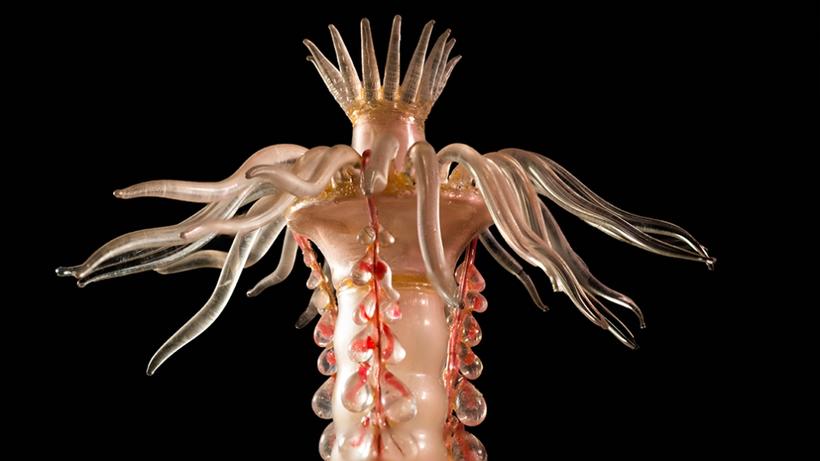
The glass marine invertebrates or Sea Creatures in Glass by father and son glass artists, Leopold and Rudolf Blaschka are renowned for their beauty and accurate detail.
You are motivated to bring narratives and myths from the Philippines into a contemporary context. What do you hope to convey through your reinterpretation?
The reason behind why I am particularly drawn to these narratives and myths is because they illustrate this connection that man has to nature.
I like how certain life forms like plants, flowers and even bodies of water in myths are personified. I find them to be important relics of Filipino culture.
They are ancient, and possess the wisdom of the world that existed before the industrial age and colonisation.
Could you take us into your relationship with colours? Is it an intuitive process? Are you particular about the colours present in your works?
Glass colours are tricky, each colour is like a person. It has its own working style, and sometimes colours aren’t compatible chemically. So when I start something, I go through a lot of trial and error in terms of which colours I use. I usually start my process with research but mostly it involves intuition.
For ‘Sea Anomaly’, I worked with the Biodiversity Management Bureau in the Philippines to learn about which species were essential to the Verde Island Passage. From this list, I picked the glass colours that were based on images of the species on the list.
“In reimagining the resilience of the essential species in this area, I am trying to depict the lack of that balance we have with living forms.”

“Sea Anomaly” by Goldie Poblador.

“Sea Anomaly” by Goldie Poblador. 
“Sea Anomaly” by Goldie Poblador.
What are the insights you’ve gained through the development of the ‘Sea Anomaly’ series?
Through the development of this series, I feel that there is a bigger and better iteration of this current body of work that I still have to create.
Installing this work at S.E.A. Focus allowed me to bring this work to an audience that I otherwise would not have been in conversation with in New York, so I am very grateful to see the response to it. Now I am starting to seek opportunities to make this bigger and better.
Your art has been described as a response to the delicate balance between nature and human activities. Can you share a specific piece where you feel this balance is most evident?
It is quite hard to select one. This most current project, ‘Sea Anomaly’ is based on two oil spills that occurred last year, and I think in reimagining the resilience of the essential species in this area, I am trying to depict the lack of that balance we have with living forms.
I also have this piece called “Venus Freed” from 2015 which was about how the Ylang Ylang flower was patented by a French perfume company in the 1920s. With this piece, I was expressing the absurdity in the appropriation of flowers and seed by man, at the same time bringing attention to how our (man) relationship with nature can lead to a disconnection from it.

One of the sculptures from “Venus Freed” series (2015) by Goldie Poblador 
One of the sculptures from “Venus Freed” series (2015) by Goldie Poblador 
One of the sculptures from “Venus Freed” series (2015) by Goldie Poblador
When Goldie first started in a little scientific glass blowing studio in Manila, the access to glass sculpting proved to be very limited, even until today. 14 years later, she continues to deepen her roots and activism, evidently reflected in her work.
In terms of your exploration of feminine shapes within ‘Sea Anomaly’, how does it contribute to the overall storytelling?
For this piece, the feminine shapes allow me to enter the work from a subconscious perspective. Through working with this character of Magwayen, the Filipina goddess of the sea and of death, I am able to explore how this character lives inside of me; sourcing energy of the dark feminine where things are destroyed and are born from the darkness.
“There is a longstanding tendency to demean craft that is traditionally assigned to women. As an artist, I proudly reclaim this and seek to elevate glass flameworking through participating in this art form which has primarily been reserved for Western voices.”
What are some traditional perceptions on glass art that you are trying to push through your work?
My practice is deeply rooted in the craft of glass flameworking. This centuries-old process uses a torch to hand-sculpt glass and has been used to create detailed objects that are both decorative and functional.
Through the years I have challenged myself to continue to learn and grow through this craft, and it is what has led me to become an immigrant artist in America. Currently my sculptures are extensions of myself and my identity as an Asian woman in America.
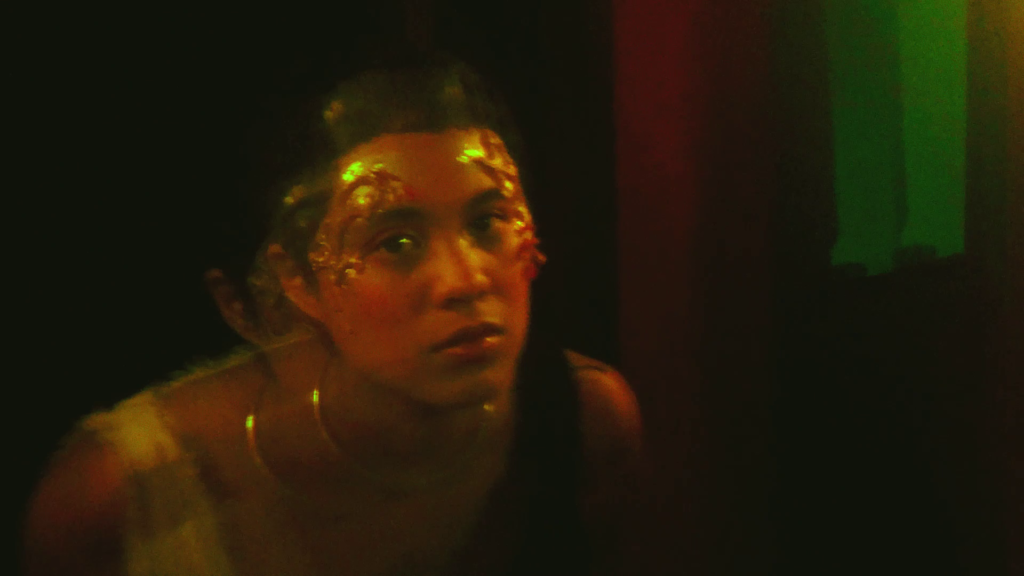
As a Filipina immigrant I am hoping to take this craft towards a future that is inclusive and one that integrates voices that have long been erased from history. I believe that the future of glass is promising, because of all the new voices that have only recently gained access to the medium.
I dream of a successful future for the craft of glass flameworking, where it is critically integrated into contemporary art practices and where it can be easily accessed.
***
Learn more about Goldie Poblador at goldiepoblador.com or follow her on Instagram here
Interview by Lylatul Qadrina
January 2024



